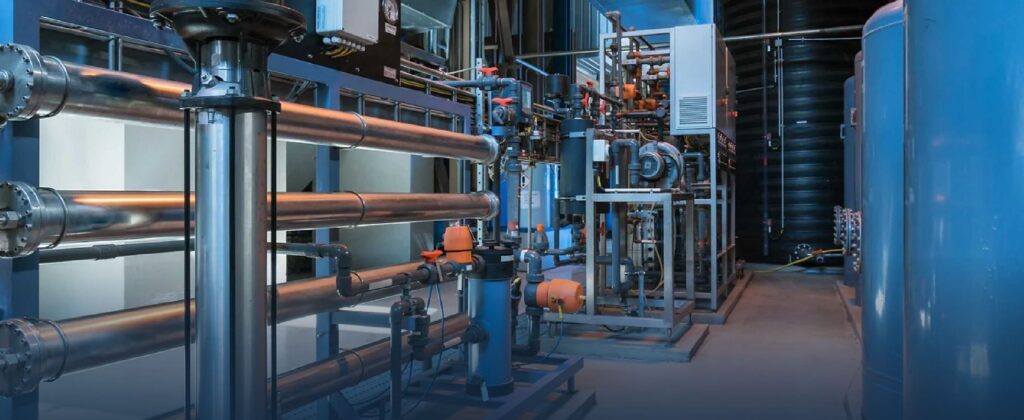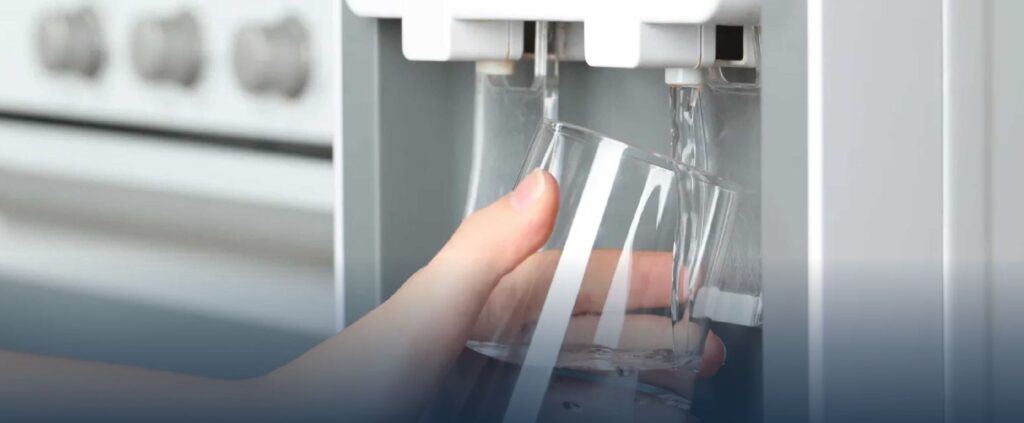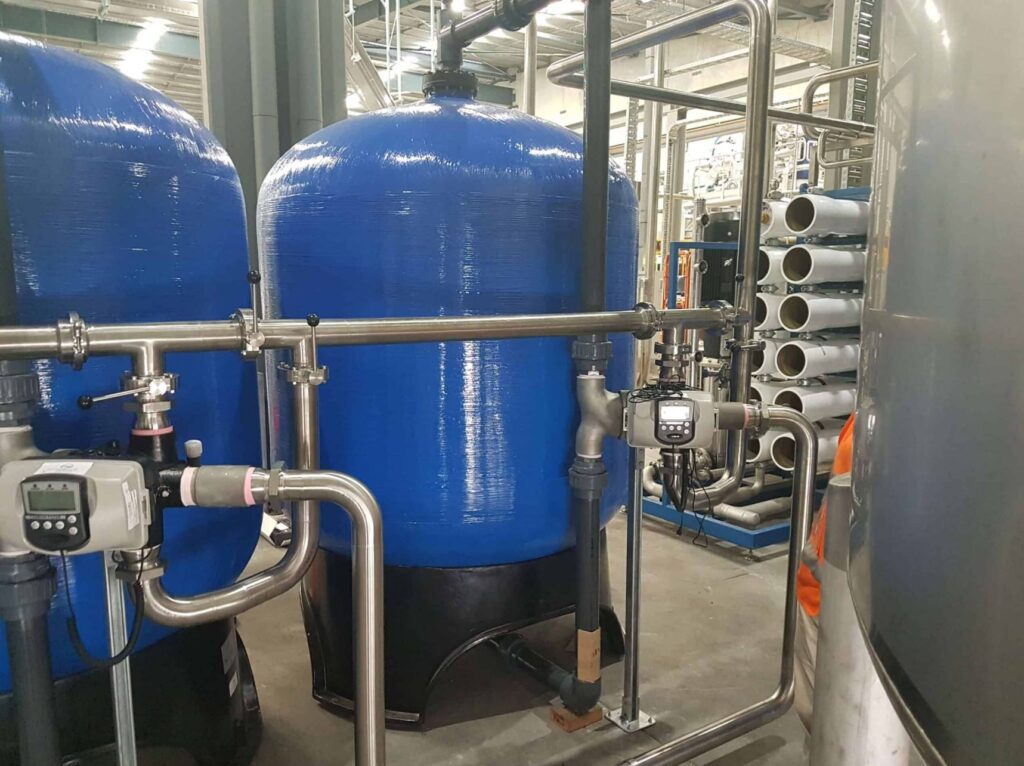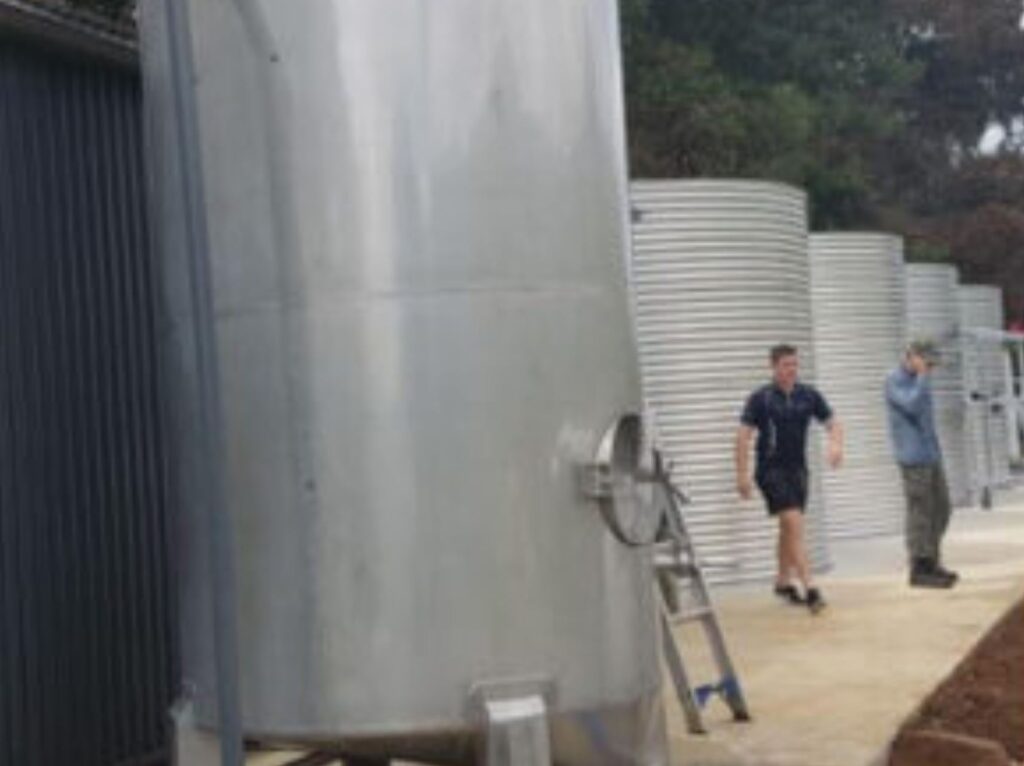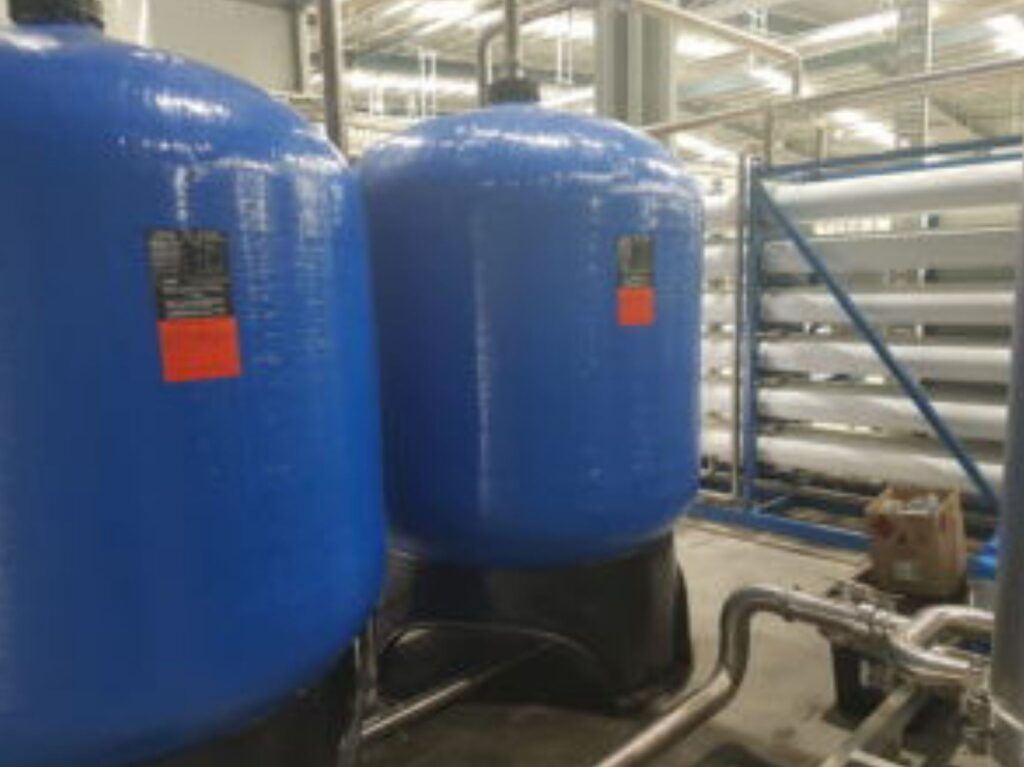~ Stapylton, QLD ~
Dechlorination of Town Water Bottling Plant
Chlorination is a common method to maintain water, such as drinking water and swimming pool water, biologically safe. It is used to destroy pathogenic micro-organisms, oxidise taste/odour-forming compounds, and form a disinfectant residual. The use of chlorine in these applications can lead to the formation of disinfection by-products (DBP) such as trihalomethanes (THMs) and haloacetic acids. In addition to the toxicity of THMs in drinking water, they can give a taste in beer, bottled water or soft drinks in the brewing and bottling industry.
[63″ Carbon Filters with 3″ Clack Sidemount Valve]
[Chemical Free Iron Removal]
[Calcite Filters effectively remineralise the permeate from the RO system]
Pacific Water Technology supplied three 63″ composite activated carbon vessels for the purpose of dechlorination of town water prior to the reverse osmosis plant. The Nu-Pure beverages bottling plant is located near Brisbane and bottles primarily spring water. A new bottling line has been commissioned using town water as influent, followed by dechlorination, reverse osmosis and then adding minerals using two 63″ Calcite filters. The system is capable of handling in excess of 700 l/min and a special type of activated carbon has been used capable of removing chlorine and chloramine from the water supply. Complete dechlorination is necessary to ensure that no oxidation damage occurs to the reverse osmosis membranes.
Chlorine is known to cause oxidation damage to reverse osmosis (RO) membranes. Exposure of membranes to chlorine is measured in terms of 1 ppm chlorine in water for 1 hour. Generally speaking, RO membranes may show deterioration (i.e. increased TDS passage) after 1000 ppm-hours of free chlorine exposure. For this reason, free chlorine levels must be held below 0.1 ppm. RO membranes are able to withstand a higher level of chloramines (1 to 2 ppm) versus chlorine (0.1 ppm) before incurring irreversible damage. However, the presence of metals such as iron or aluminum in water can act as catalysts and accelerate the oxidation of membranes even at low concentrations of chloramines.
3 Large Composite carbon filters have been installed to enable contact times in excess of 10 minutes for effective chloramine removal. The automated backwash ensures that the carbon media is refreshed, and also helps to reclassify the bed. Once the water has passed through all three filter vessels, the influent is fed into a reverse osmosis plant to remove all contaminants from the water. The permeate is then fed into a series of large calcite media vessels to increase the pH and alkalinity. This ensures that the permeate almost completely devoid of any minerals is remineralised with calcium.
Benefits of Calcite Filters
- Raises pH of water to a non-corrosive equilibrium
- Reduces Leaching of Metal Plumbing Components and Copper Piping
- Advantages of Calcite
- Naturally occurring material
- Low uniformity coefficient for maximum contact
- Slower Reacting for controlled pH correction


